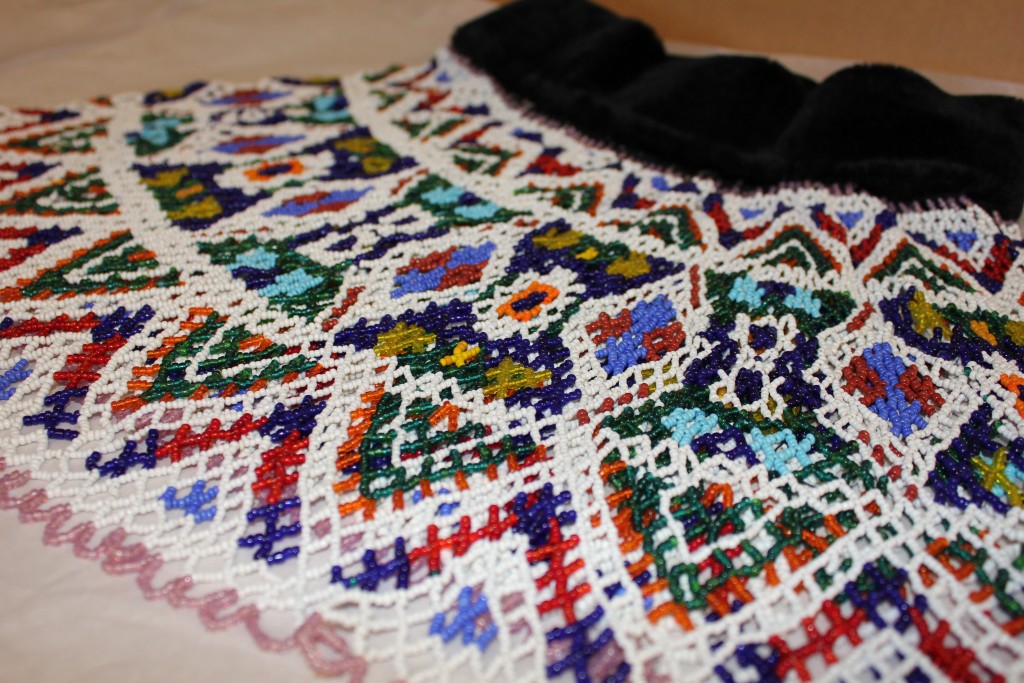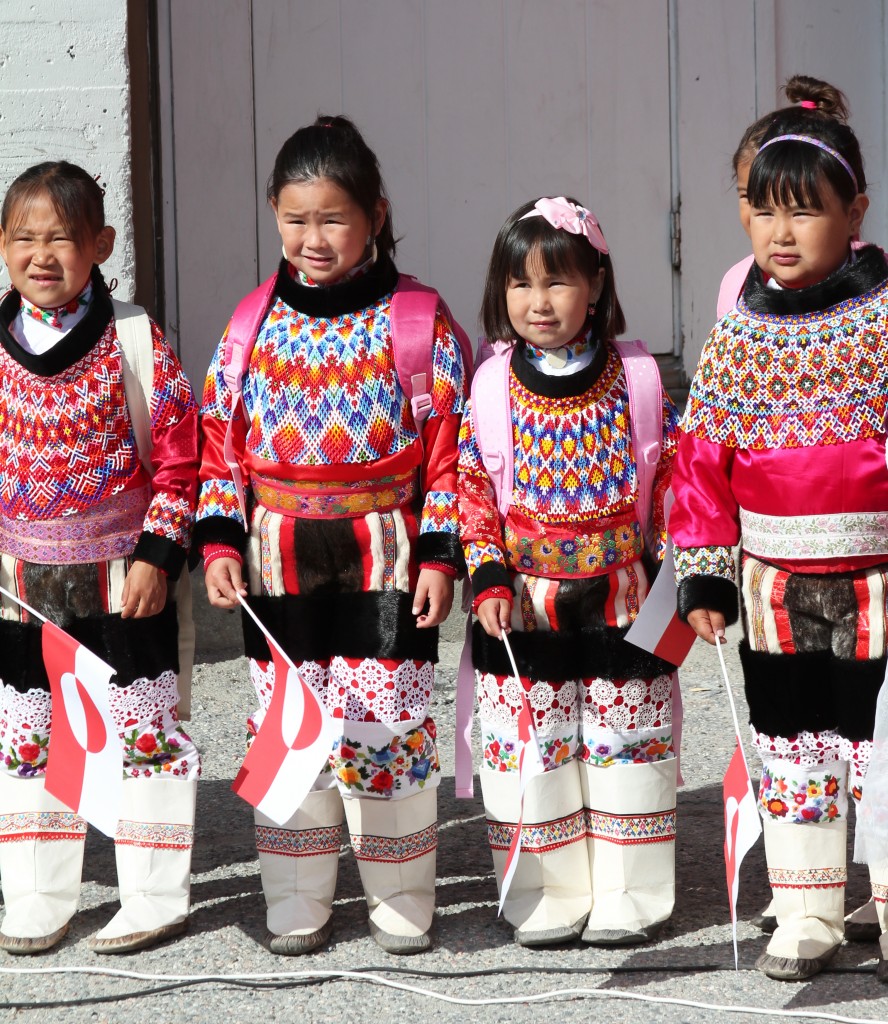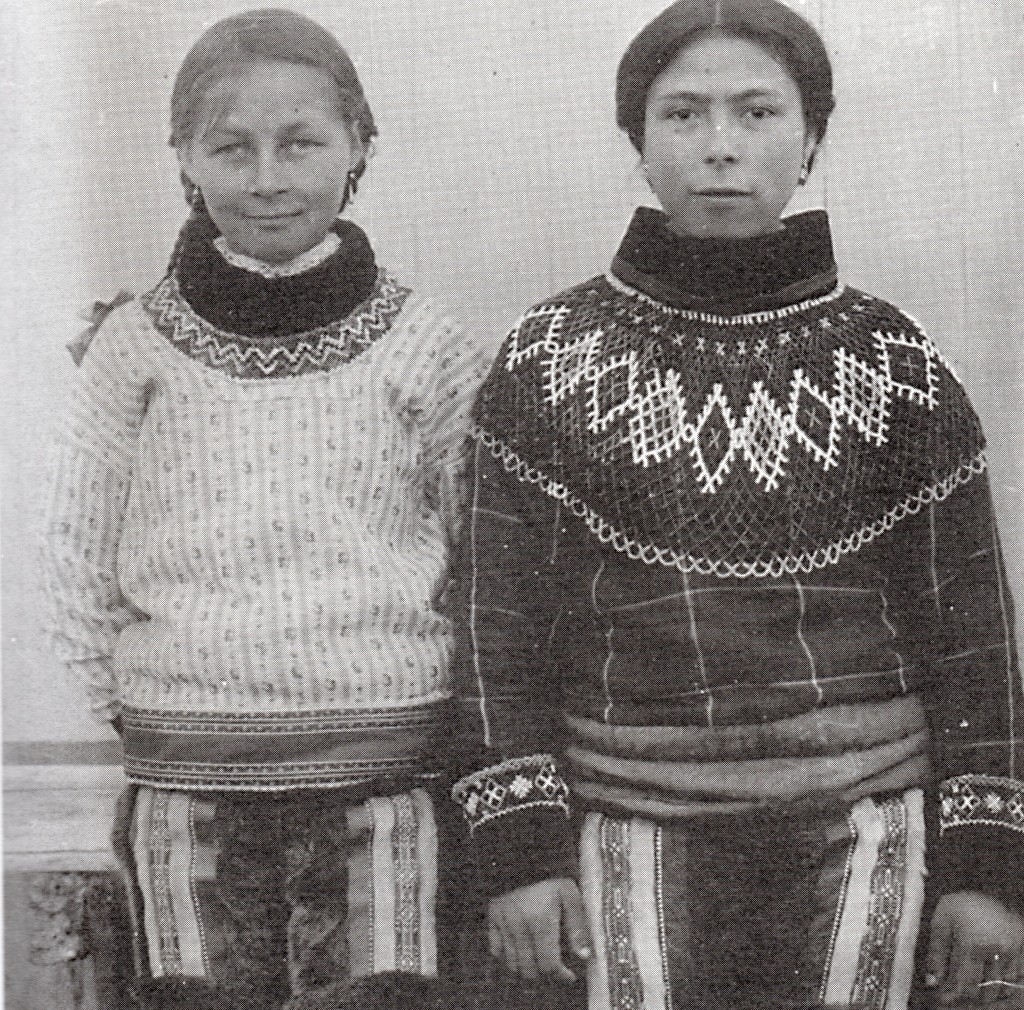Inuits of Greenland have used beads to decorate themselves and their clothes as well as amulets for good fortune and protection against evil spirits for thousands of years. The earliest known beads were made of natural material as soft stone, bones, mussels, teeth and parts of the fish vertebrae and skeleton. Tiny beads of fish vertebrae coloured with blood, juice from berries and herbs and then mixed with the natural off white, were strung up to get different patterns for adornment long before the arrival of whaling ships and missionaries, who were responsible for bringing European glass beads to trade in the early 18th century.
The elaborate use of imported European glass beads as seen today in the beautiful collars for their national costume is a rather new fashion starting at the beginning of the 1900 century. As people got more money and the beads became cheaper to buy, the collar has developed from maybe a few beads around the neck opening to large collars reaching down to the elbows.
The traditional women parkas made of leather had a big hood in the back where they could carry their little once. The edge of the hood was decorated with strings of large beads, as well as the hem and cuffs and today you can see some amazing examples in museums both in Nuuk and Canada. Over time the parkas changed and the large hood became smaller and smaller until the form of a wide standing collar was all that remained. The animal skin was replaced by cloth and only black seal skin is today kept as decoration for the neck and arms. In this transformation the beadwork became more and more extensive and today mirrors the beautiful geometrical patterns made by small strips of leather to decorate their kamiks (boots). Men don’t use beads on their costumes, but often as a totem.
Beadwork became immense popular among women and were used to decorate many household items such as serviette rings, Christmas decoration, candleholders and table mats.
A tradition probably imported from Denmark or Norway is the knitted wrist warmers also with beautiful glass bead patterns used both with the national costume as well as in everyday life.




